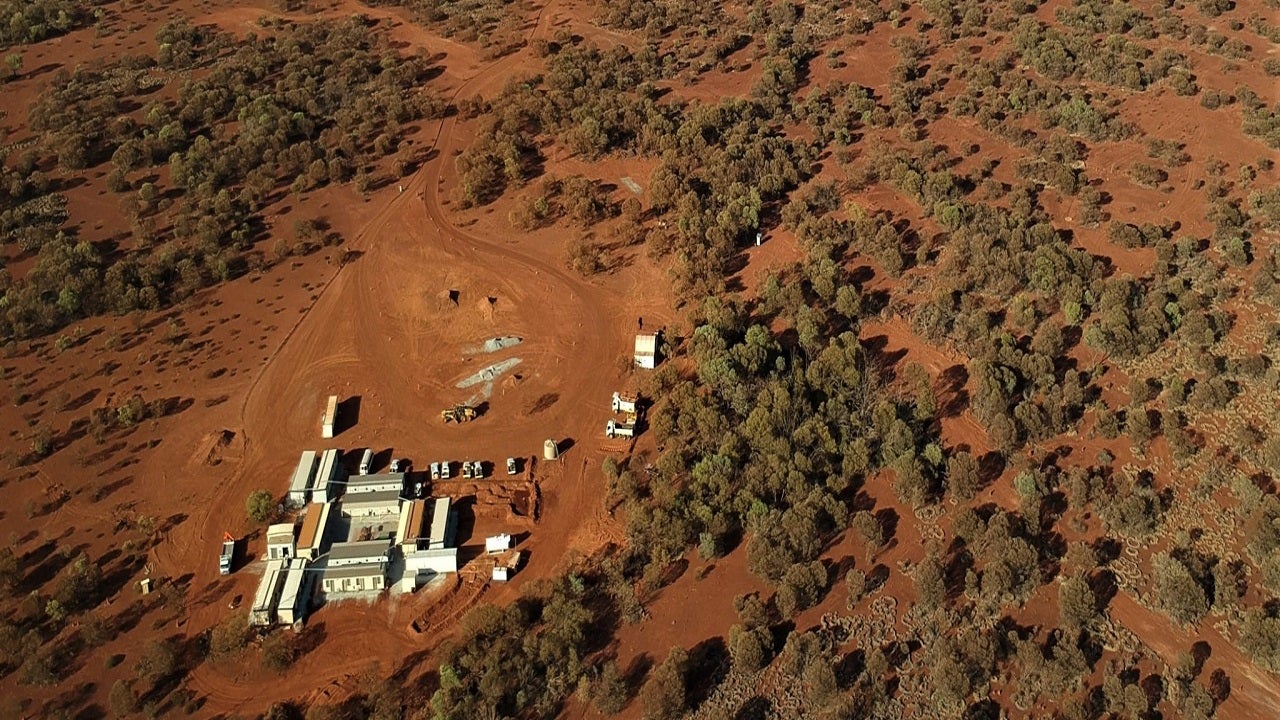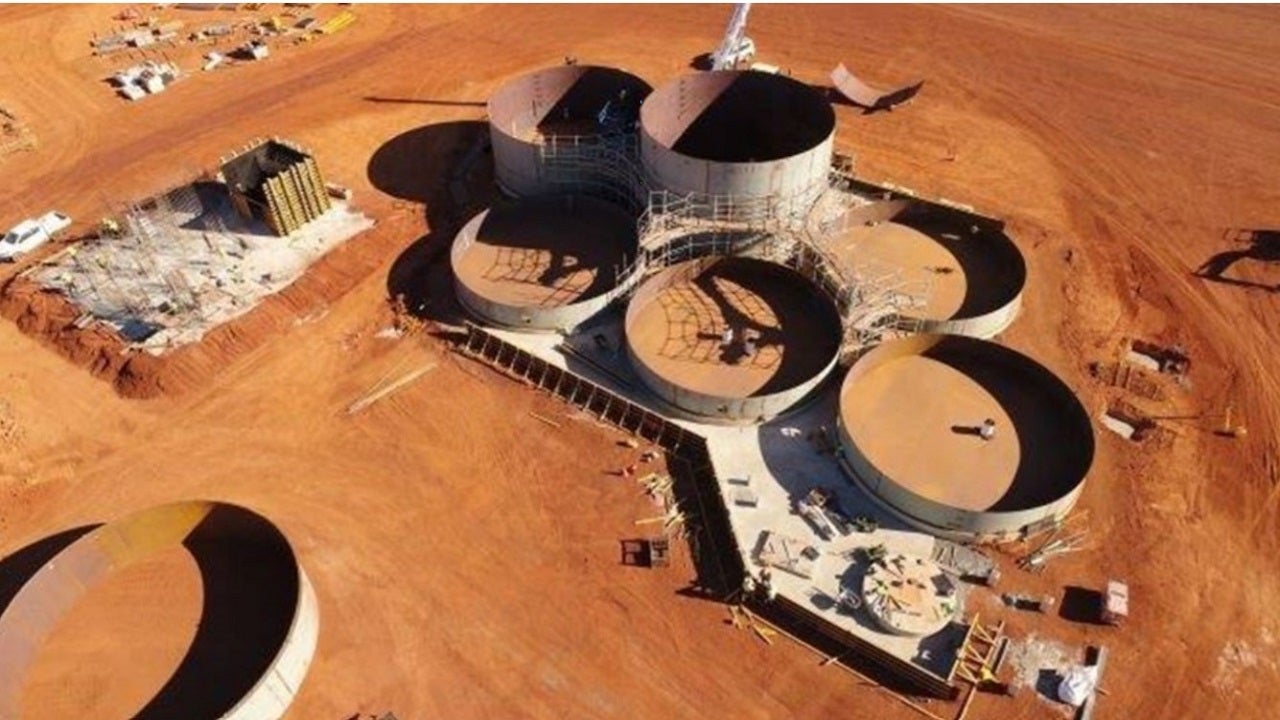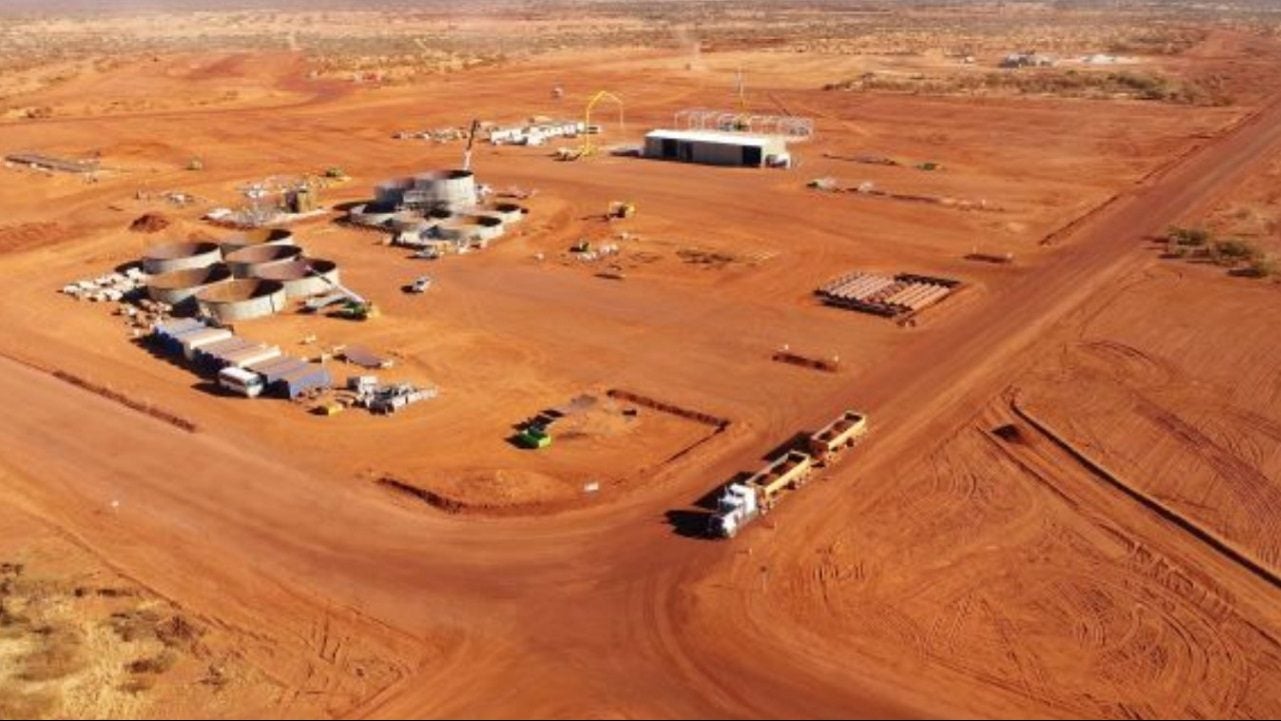Karlawinda is an advanced gold project located in Western Australia. It is 100% owned by Capricorn Metals.
The project contains the Bibra deposit and several valuable exploration targets across prospective greenstone belts, including the Francopan prospect. It is estimated to produce approximately 1.2 million ounces (Moz) of gold over the anticipated mine life of 12 years.
Gold mineralisation was discovered at the site by WMC Resources in 2005. The project was acquired by Independence Group in 2008, and later by Capricorn in February 2016.
Capricorn undertook two additional phases of resource drilling, which resulted in two resource updates. The feasibility study for the project was completed in October 2017.
Construction of the processing plant began in June 2020, while pre-production mining activities are expected to commence in December 2020. Commissioning of the plant is expected by March 2021 and the first gold is anticipated by June 2021.
Location of Karlawinda gold project
Karlawinda gold project is located in the Pilbara region of Western Australia.
The project area is 110km-wide and 30km-long and comprises 13 granted tenements. The site is situated 70km from the town of Newman and is in close proximity to major infrastructure and mining support services in the town.
Newman is accessible via the Great Northern Highway and an airport with a single sealed airstrip is located 10km away from the town.
Geology and mineralisation
Karlawinda gold project is located in the Sylvania Inlier, an Archean granite-greenstone province. The project lies within the Karlawinda greenstone belt, which stretches over the Sylvania Inlier.
The main prospect of the project is the Bibra gold deposit, with a strike length of more than 2.5km and a down-dip length of 2.5km, with an open strike and down dip. The geology at the deposit includes a series of alternating Archaean amphibolites and garnet schists, while the majority of the mineralisation is found in silicified and magnetite altered, mylonitised sandstone.
Gold mineralisation at Karlawinda is associated with laterite and oxide/primary mineralisation. Situated beneath the surface, the laterite mineralisation includes pisolitic lateritic duricrust comprising maghemite, hematite, and goethite. The oxide gold mineralisation lies underneath the laterite gold mineralisation in clays rich in kaolin and smectite.
Karlawinda gold project reserves
In April 2020, Capricorn Metals reported a 35% increase in the ore reserves of the project to 43.5 million tonnes (Mt) graded at 0.9g/t of gold (Au) containing 1.2Moz. The reserves estimate includes Bibra (contained gold of 1.09Moz) and Southern Corridor (contained gold of 111,000oz).
The total mineral resources of the project are estimated to be 86.7Mt graded at 0.8g/t of Au for 2.14Moz.
Mining at Karlawinda
Karlawinda gold project will employ open pit mining from a single large multi-stage open pit. The Bibra deposit will undergo open pit mining using conventional mining equipment.
The project will utilise grade control drilling, drilling and blasting and load and haul activities.
The mining method, design and extraction sequence have been chosen to suit the attributes of the orebody and reduce dilution and ore loss.
A detailed fragmentation modelling was conducted to analyse suitable blasting methods and powder factors across the ore and rock types. Drilling and blasting will be performed on 5m benches in ore and 5m and 10m benches in waste, while grade control drilling will be performed through reverse circulation drilling.
Peak pit production rate is expected to be approximately 7Mt per quarter and will be maintained for more than a year before decreasing to a steady rate of approximately 4.5Mt per quarter for three years. The production profile will then adopt a natural downward trend as the material will only be sourced from the Stage 3 pit while approaching mine plan completion.
The mining fleet will include eight 130t haul trucks, four 100t haul trucks, as well as 300t, 200t and 100t excavators. The ancillary equipment will include dozers, graders, loaders and watercarts.
Processing at Karlawinda
The Karlawinda process plant will have a throughput capacity of up to 5 million tonnes per annum (Mtpa) in the oxide/fresh ore blend for the initial three years, and up to 4.5Mtpa in solely fresh rock ore thereafter.
The ore will be treated using standard processing technology involving single-stage crushing, a 4.8MW single-stage semi autogenous grind (SAG) mill and a 4.8MW ball mill (SAB) grinding and gravity recovery, and conventional cyanide leaching and carbon in leach (CIL) recovery process.
The processing plant design comprises a crushing circuit, crushed ore stockpile, grinding and classification, gravity recovery, leaching and adsorption, elution and electrowinning, and smelting.
Karlawinda gold project infrastructure
The site will receive natural gas via a 56km-long pipeline connecting to the Goldfields Gas Pipeline (GGP).
The company plans to construct a tailings storage facility/integrated waste landform (TSF/IWL) for storage of process tailings coming from the processing plant. The TSF/IWL will have a capacity of 21Mt with an operational life of 6.5 years.
A 306-room accommodation village became operational in the first half of 2020, while the 44km-long site access road is practically completed.
The project will involve the construction of a 16MW gas-fuelled power station with 2MW of diesel back-up.
Contractors involved
Cube Consulting was contracted to provide open-pit mining engineering services.
Orway Mineral Consultants undertook the modelling of the comminution circuit in collaboration with Mintrex and Minelogix, while Mintrex was contracted for the engineering design of the processing plant and associated services.
George Boucher Consulting undertook the detailed fragmentation modelling. GR Engineering Services was appointed as the preferred tenderer for the design and construction of the processing plant and associated infrastructure.
MHA Geotechnical performed the geotechnical investigation of the plant site, while Groundwater Resource Management (GRM) was contracted to conduct the groundwater and surface water studies.
MACA is the preferred mining contractor for the project. The A$400m ($288.47m) contract covers mining activities for the first five years.
In June 2020, APA Group and Capricorn reached an agreement for the supply of gas from the GGP. APA Group will also build, own and operate the pipeline, which will connect the GGP to the gold project.
A power supply agreement was signed with Contract Power to build, own and operate the power station.






